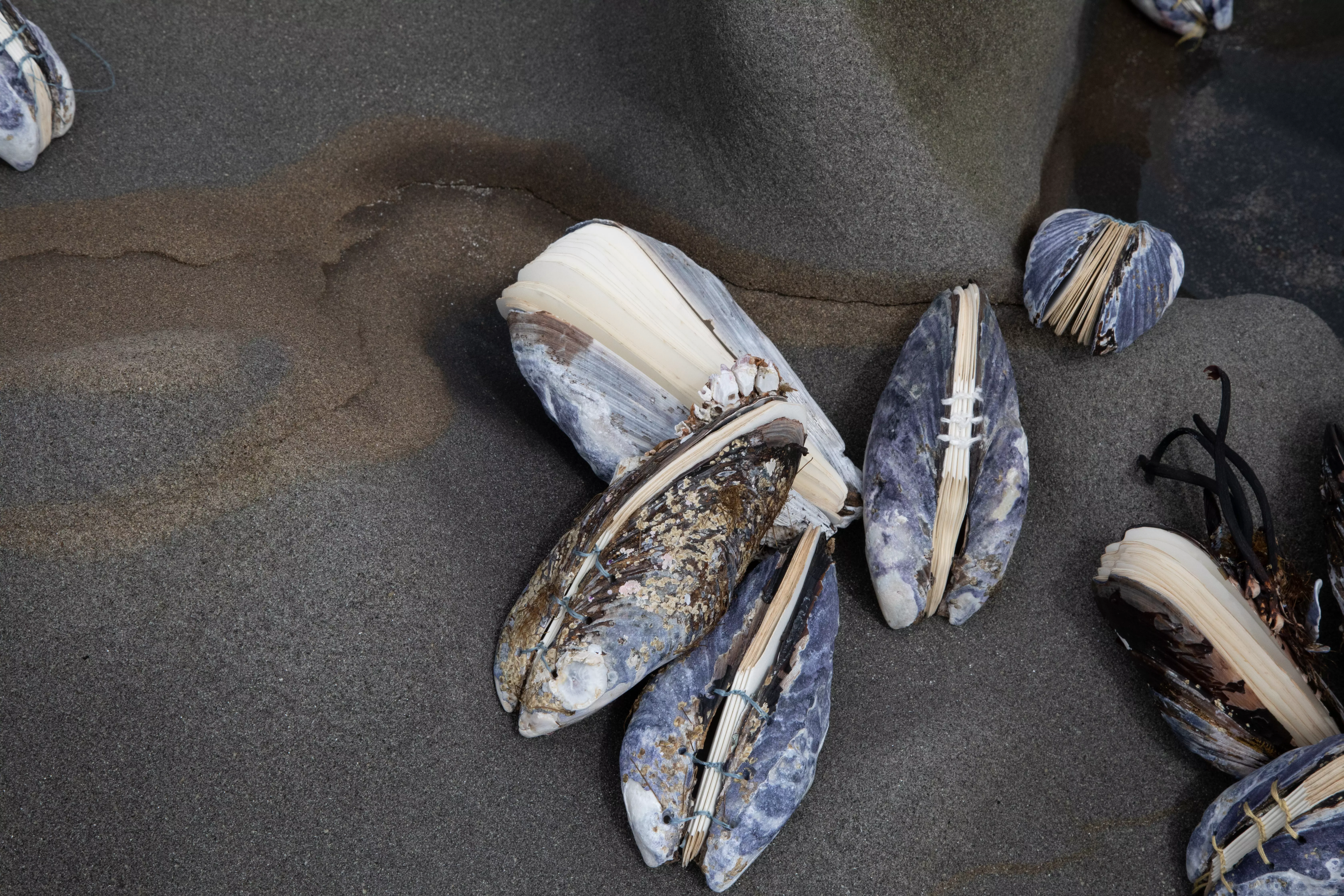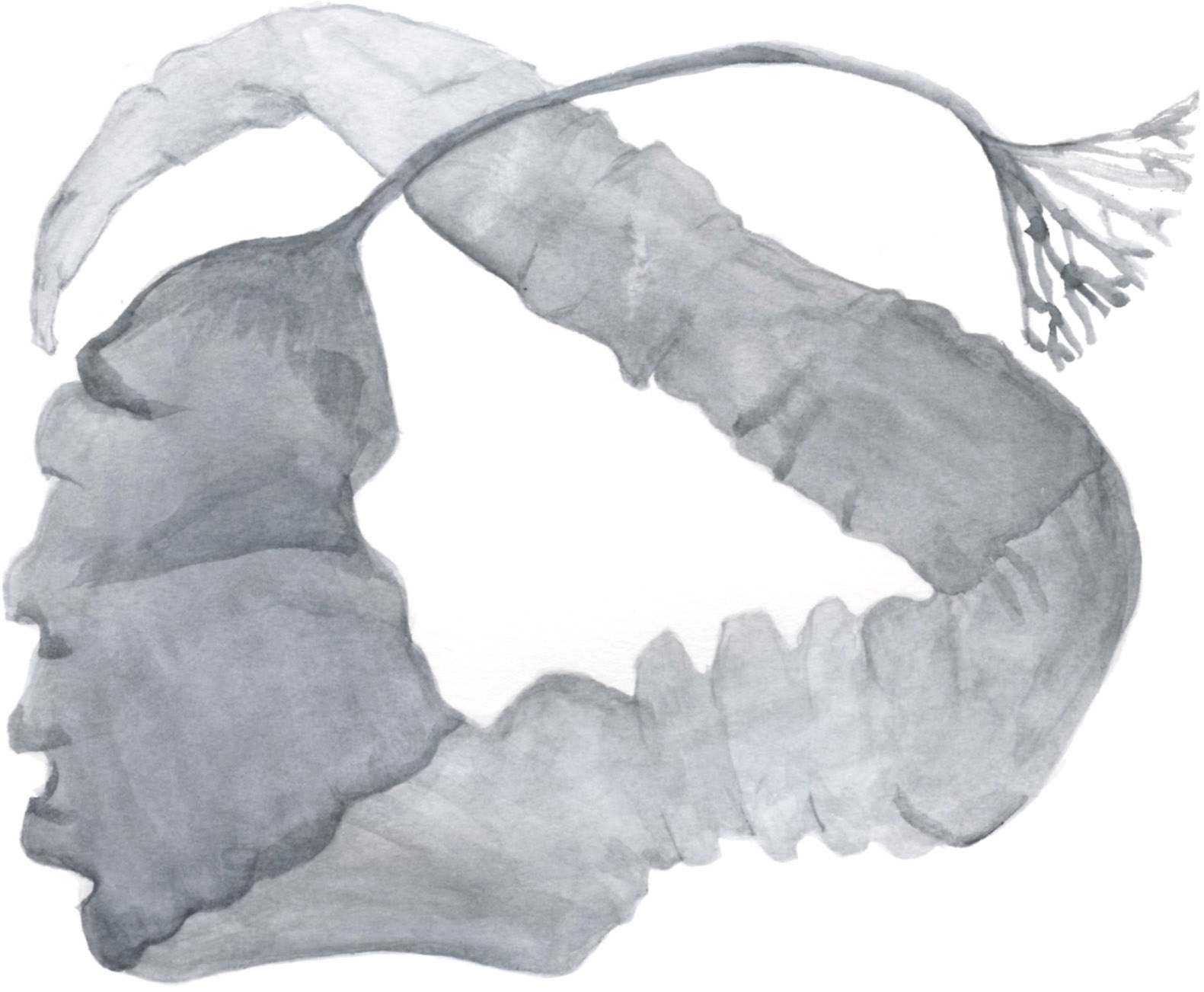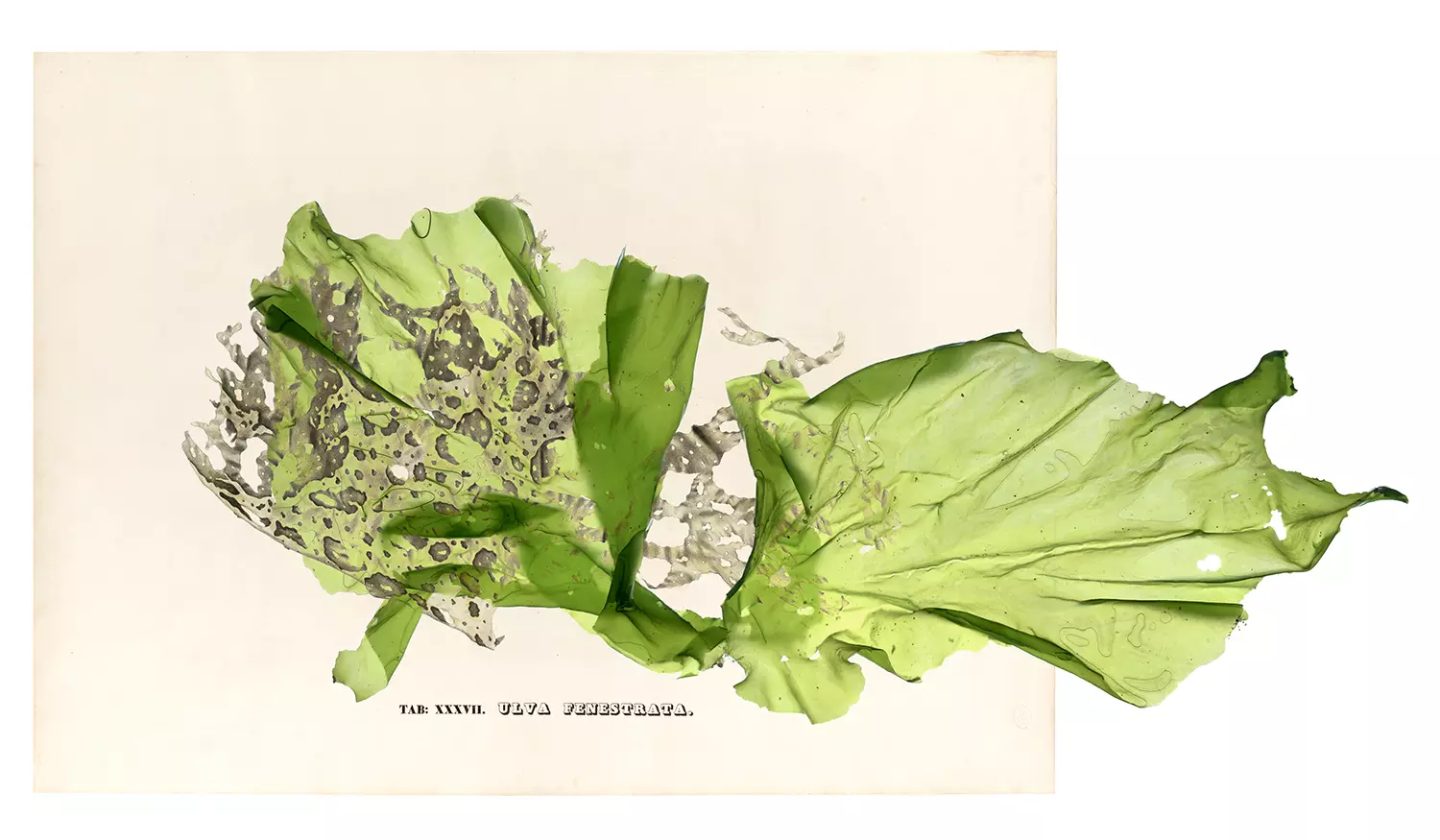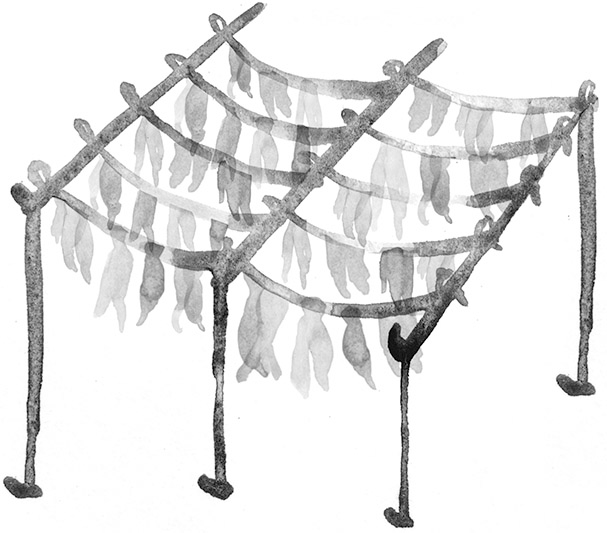2025 Educational Opportunities
Dakini Tidal Wilds (British Columbia) continues to host workshops and learning opportunities
Smithereen Farm (Downeast Maine) continues to host Low Low Tides days begin March 2025.
The Myco Buoy Project (Upstate New York / Maine) continues its program developing biodegradable flotation solutions for aquaculture.
25th Annual International Seaweed Symposium, May 4 – 9, 2025 | Victoria, British Columbia, Canada

What is seaweed?
Seaweed is a common term for marine macroalgae. If it's growing in the sea, looks plant-like, and is not a coral, it is probably marine algae. Seaweed is classified into three biological categories: Rhodophyta (red), Phaeophyta (brown), and Chlorophyta (green), each has its own unique lifecycles, reproductive strategies*, and biological patterns. Seaweeds are biologically classified as algae, not plants. As such, they use their entire bodies to photosynthesize.
*Learn more about Bull Kelp's reproductive cycle, alternation and generations, here.
Morphology
The physical characteristics and morphology of seaweeds are hugely diverse and differential across species and color classification. Here are some basic terms and descriptions to look out for at the shore.
Blade: akin to a plant leaf
Stipe: akin to a plant stem
Float: sac containing air or seawater, enables the seaweed to float up towards the sunlight
Holdfast: akin to a plant root, attached directly to rock or substrate
Habitat
Translucent, hearty, and nimble, seaweeds survive in some of the most difficult habitat niches on the planet. They live in the intertidal zone, between nearshore and foreshore. There are four tidal zones--low, mid, high, and spray--with various seaweed species growing differentially according to the zones. If you look at low tide, you can use specific seaweed species growth as a guide to tell where one tidal zone ends and the next begins.
Kelp forests and other macroalgae beds off the coasts are some of the most dynamic and highly productive ecosystems on earth; they provide foundational marine productivity, yielding three-dimensional habitat for maritime flora and fauna.
Ecological Role
Micro and macro algae form the basis of the marine food web. At the low trophic level, seaweeds support the critters, oxygenates the waters, and constitute the foundational flourishing of intertidal places. Kelp bodies provide habitat at multiple levels: The holdfast, stipe, and fronds host marine flora and invertebrates; the surface canopy, mid and bottom areas, and fringe areas support fish; drift kelp and wrack (kelp detritus washed up on shore) provide roosting material and food for birds and organic matter for nearby soils (NPWS). Kelp acts as a direct and indirect food source for many of the dwellers in it’s habitat; in some cases, up to 60% of carbon found in coastal invertebrates is attributable to kelp productivity (NPWS).
Algae growth, fresh or salty, can be understood as a material indicator of an oceans health. The seaweeds photosynthesize, fix carbon, oxygenate the water column, and protect the coastline by absorbing storm surges. Agricultural runoff springs toxic freshwater algae blooms while the warming and acidifying and otterless bays cause kelp forests to dwindle. That which is difficult for humans to discern, the state of water, is made visible through the seaweed.
The primary production of kelp (the production of new biomass by way of internal respiration, detrital material shed, mucus, and other dissolved organic matter) per unit area is amongst the highest known in aquatic ecosystems (NPWS). Marine algae are responsible for nearly 50% of photosynthesis every year.
Listen to a bubble of air produced by algal photosynthesis ping here!


Seaweed is touted as a miracle product, attracting interest from various sectors, including biotechnology, energy, climate, and agriculture. Seaweed is used to create emulsification in chocolate milk and toothpaste, glues, gums, paints, and even fracking liquid. Seaweed forests harvested from our coastline are being turned into fertilizer, foliar spray, dairy food amendment, and countless industrial applications, global demand for which is increasing every year.
The hype for kelp burgers and kelp biofuels and kelp plastics may reside mostly in the business section of the newspapers, with big investments, big promises, and big biotech companies creating shiny futurist ‘save the world’ narratives. The trouble is that the seaweed has to come from someplace. Right now, it's a lot cheaper to supply these markets by over-harvesting from the wild with few, if any, ecological regulations in place. Read our position statement for Seaweed Commons’ position on changing seaweed economies.
Who are the harvesters?
There are myriad traditional, artisanal seaweed cultures: culinary, medicinal, and horticultural traditions that bring these important minerals onto the land to integrate them into terrestrial systems.
Historically, small amounts of marine algae have been harvested by coastal peoples for food and on-farm fertility, which expanded in the nineteenth century to include various industrial inputs.
In Scotland, there are sheep adapted to digesting seaweed, in Shetland, there are cabbages adapted to growing in sand + seaweed culture, in Ireland the poverty foods of laverbread and carrageenan pudding helped farmers survive the potato famine. On Jeju island off of South Korea a woman-led seaweed harvesting culture, in France, the farmers combed the beaches with horses to bring seaweed into their gardens.
Today Seaweed is being harvested by various actors, each working at differential levels of scale, economic viability, and environmental impact. Small scale wild-harvesters and kelp farmers hand-cut their seaweed, and are often tuned-in to the growth and health of areas that they cut. Industrial harvesters often contract out.
Wild Harvest
Everywhere there is seaweed, there are a handful of committed and dazzled small-scale seaweed wild-harvesters. The pruning method (small hand-cuts from healthy organisms) generally ensures adequate regeneration in wild harvest contexts. See the Maine Seaweed Council’s Harvester’s Guide to Maine Seaweeds for more detailed guidelines.
Support our friends and local seaweed heros:
Northern California: Daybreak Seaweed | Northern California: Ocean Harvest Sea Vegetable Co. | British Columbia: Dakini Tidal Wilds | Pacific Northwest: Ryan Drumm and Mermaid Botanicals | Alaka: Alaska Shellfish Farms | Maine: Smithereen Farm | Maine: Atlantic Holdfast | Maine: Maine Seaweed LLC
History of Aquaculture
This field is broad, and not just one thing. Practices that can be understood as aquaculture include First Nations traditional mariculture practices in British Columbia like Clam Gardens, South American floating finfish farms, Integrated Multitrophic Aquaculture, oyster cultivation, massive salmon pens in Norway, off-shore kelp farms for bio-fuel, and abalone restoration efforts off the coast of California.
Contemporary Aquaculture Narratives
Dominant narratives about seaweed aquaculture have been shaped by its largest sectors, who delight in a ‘seaweed-as-world-saving” narrative. We hear that seaweed is the solution to climate change, pollution, the energy crisis, and even to economic disenfranchisement in rural towns. But we know that not all aquaculture is alike. Research from around the world has shown the disease, displacement, and large negative footprint of conventional marine aquaculture.
On both coasts of North America, large, industrial aquaculture operations are currently making their way through regulatory hurdles to set up operations. Industrial fish farms and others in the realm of financial speculation, do not represent wise resource use or restoration. Seaweed Commons wants to shed light on harmful narratives and approaches to the seaweed sector and offer our own, collectively designed and localized visions for right sized seaweed economies.
VIDEO: Seaweed Stories, directed by Jake Sumner for Lonely Whale.
"A vibrant, global look at the wonders of seaweed, and some of the extraordinary stories and characters whose lives have been entangled by this often overlooked marine plant which may hold answers to some of humanity’s biggest challenges."
VIDEO: The Pioneers of Food, produced by Northern Heart Films for Quorn Foods.
"As we face rapid climate change and food shortages these passionate few are leading their industry into exciting, uncharted waters. Watch as the film explores the environmental benefits of seaweed and the impact this revolutionary crop can have on the future of our food."



- The Science and Spirit of Seaweed by Amanda Swinimer*
- Pacific Seaweeds by Louis Druehl*
- Marine Macro- and Microalgae: An Overview by F. Xavier Malcata, Isabel Sousa Pinto, A. Catarina Guedes
- The Curious World of Seaweed by Josie Iselin*
- Limu: An Ethnobotanical Study of Some Hawaiian Seafoods by Isabella Aiona Abbott
- Seaweed Chronicles by Susan Shetterly
- Seaweed: A Global History by Kaori O'connor
- Seaweed Memories in the jaws of the sea by Heinrich Becker
- Seaweeds by David Thomas
- Slime by Ruth Kassinger
Browse the online collection of seaweed-related works housed within the Greenhorns Agrarian Library at Reversing Hall. And then come visit Pembroke and browse more than 8,000 volumes yourself!
Artists & WorksViolaine Buet | Josie Iselin | Algae Platform Atelier Luma | Eyes as Big as Plates | Cooking Sections | CLIMAVORE: On Tidal Zones | Dan Hawkins | Artifishal film by Patagonia

For Adults
Algae Technology Education Consortium: The seaweed course is an online compendium of videos chosen and newly created to give a thorough initiation into the culture of various commercial seaweeds, including kelps, for those interested in getting started in algal-based aquaculture.
Aquaculture in Shared Waters Curriculum: The Aquaculture in Shared Waters program prepares fishermen to start an aquaculture venture, with associated research to understand the attitudes, perceptions and knowledge of fishermen with respect to this change.
Maine Seaweed Exchange
Slow Fish
Citizens for Responsible Aquaculture: International blog for and by coastal communities concerned with the negative impacts of industrial-scale fish farms. Includes viewpoints of community members from Canada, USA, Norway, Ireland and Chile.
Global Seaweed Project, SAMS: This project aims to create a global ambitious network of partners tackling emerging issues in seaweed cultivation (e.g. pests, invasives, pathogens), using a combination of two-way knowledge transfer and community-oriented research activities.
Maine Seaweed offers apprenticeships for comitted wild seaweed harvesters and learners
The Algae Foundation: The Algae Foundation provides K-16, graduate and post graduates travel grants
Introduction to Algae Massive Open Online Course (MOOC): This course brings together some of the foremost algae experts from industry and academia
Herring Gut Learning Center
The Algae Foundation
The Algae Academy is a K-12 Algae STEM Initiative
Fishadelphia is a community based fisheries program run by high school students


